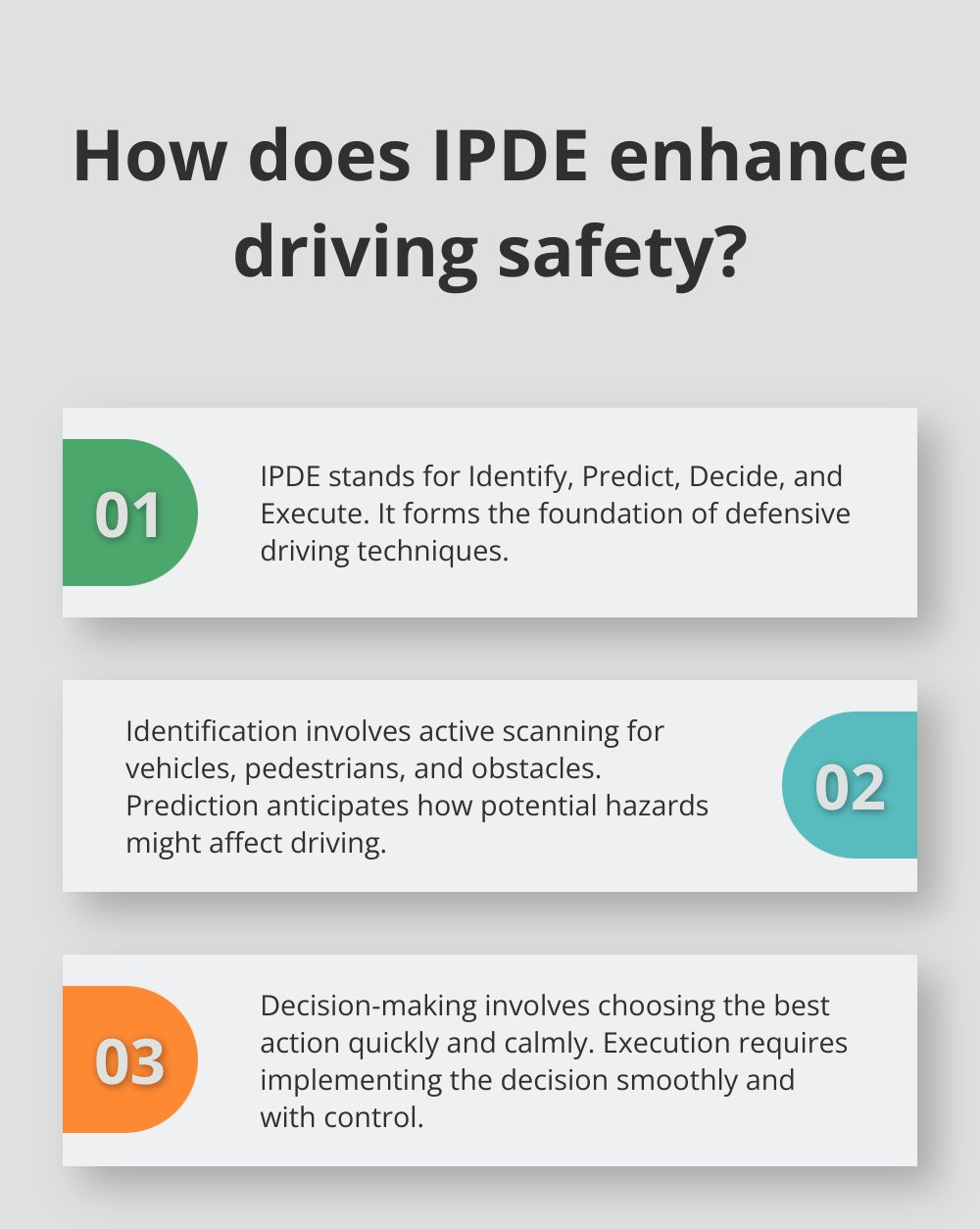Increased speed significantly impacts the time available to complete the IPDE process. As drivers travel faster, they have less time to perceive, decide, and execute actions on the road. This reduction in reaction time can have serious consequences on driving safety. Understanding how increased speed influences this process is crucial for ensuring efficient decision-making and overall road awareness. Let’s delve deeper into how speed plays a pivotal role in the effectiveness of the IPDE process.
How Does Increased Speed Affect the Time Available to Complete the IPDE Process?
Welcome, young drivers! Today, we are going to talk about a crucial topic that can help you become safer and more aware on the road – the IPDE process. But, do you know how speed affects the time you have to complete each step of the IPDE process? Buckle up, as we dive into this important discussion!
Understanding the IPDE Process
Before we delve into the impact of speed, let’s quickly revisit what the IPDE process stands for. IPDE stands for Identify, Predict, Decide, and Execute. It’s a method that helps drivers process information and make safe driving decisions on the road. Now, let’s see how speed plays a role in this process.
The Influence of Increased Speed on Identification
Imagine you are driving down the road, trying to spot potential hazards. The faster you go, the less time you have to identify these hazards. At higher speeds, everything seems to zoom by quickly, making it harder to notice important details like pedestrians, road signs, or other vehicles.
When you are speeding, your brain has to work extra hard to process all the information coming your way. This means that even if you are trying to identify potential dangers, you might miss crucial clues due to the limited time available at higher speeds.
Predicting Consequences at Different Speeds
Once you have identified a potential hazard, the next step is to predict what might happen next. Speed significantly affects your ability to predict the consequences of your actions. When you are driving fast, your reaction time decreases, leaving you with less time to anticipate how a situation might unfold.
For example, if a car suddenly swerves in front of you, your prediction of whether you can safely brake or switch lanes depends on your speed. At higher speeds, your margin for error shrinks, making it more challenging to accurately foresee the outcomes of your decisions.
Deciding Wisely under Speed Pressure
Decision-making is a critical part of safe driving. However, when you are driving too fast, the time available to make decisions reduces significantly. Speed affects your ability to weigh options, assess risks, and choose the best course of action.
Imagine approaching a yellow traffic light – at a moderate speed, you have enough time to decide whether to stop or proceed with caution. But if you are speeding, that decision-making window closes rapidly, leading to impulsive choices that may not be the safest.
Executing Actions Safely at Varying Speeds
The final step of the IPDE process is executing your chosen course of action. Speed directly impacts how effectively you can carry out your decisions. At high speeds, your control over the vehicle decreases, making it harder to maneuver or react to sudden changes in the environment.
For instance, in an emergency situation, such as encountering a deer on the road, your ability to execute evasive maneuvers is compromised when you are driving too fast. Speed reduces your margin for error, increasing the likelihood of accidents or collisions.
The Importance of Adjusting Speed for IPDE
As young drivers, it’s crucial to understand that speed is not just about reaching your destination faster. Speed directly influences your ability to effectively apply the IPDE process while driving. By adjusting your speed based on road conditions, traffic flow, and visibility, you can give yourself more time to go through each step of IPDE thoroughly.
Remember, driving is not a race – it’s about staying safe and making responsible choices behind the wheel. So, the next time you get behind the wheel, consider how your speed affects the time you have to complete the IPDE process and drive accordingly!
Stay safe and happy driving!
That’s a wrap for today’s blog post. We hope you learned something new and valuable about the connection between speed and the IPDE process. Drive safe, be attentive, and always remember that safety comes first on the road. Until next time!
LESSON 1.4
Frequently Asked Questions
How does increased speed impact the time available to complete the IPDE process?
Increased speed reduces the time available to complete the IPDE process, as the driver needs to process information more quickly to make decisions in a timely manner. This means there is less time to perceive potential hazards, evaluate risks, and make appropriate driving responses.
Why is it important to adjust your speed according to the road conditions and traffic flow?
Adjusting speed according to road conditions and traffic flow is crucial for allowing sufficient time to complete the IPDE process effectively. Slowing down in challenging conditions gives the driver more time to observe, evaluate, and react to potential hazards, enhancing overall safety.
What role does increased speed play in reducing the effectiveness of the IPDE process?
Increased speed decreases the effectiveness of the IPDE process by compressing the time available for each stage. When driving at higher speeds, there is less time to perceive and process information, leading to reduced awareness of potential hazards and limited time for making well-thought-out decisions.
How can a faster driving speed impact a driver’s ability to anticipate and respond to unexpected situations?
Driving at a faster speed diminishes a driver’s ability to anticipate and respond to unexpected situations promptly. With less time available to observe and analyze the environment, the driver may struggle to react quickly and appropriately to sudden changes in road conditions or the actions of other drivers.
What are the dangers of rushing through the IPDE process due to driving at an increased speed?
Rushing through the IPDE process due to driving at an increased speed increases the likelihood of missing important cues and making hasty decisions. This impairs the driver’s ability to properly assess risks and respond proactively to potential hazards, elevating the risk of accidents and endangering the safety of all road users.
Final Thoughts
Increasing speed reduces time for IPDE process, risking safety. The limited time leads to hasty decisions, compromising hazard detection. How does increased speed affect the time available to complete the IPDE process? Rushed assessments hinder proper response planning. Maintaining a balanced speed allows for thorough observation, ensuring effective risk management. Speed directly impacts the quality and efficiency of the IPDE process.







